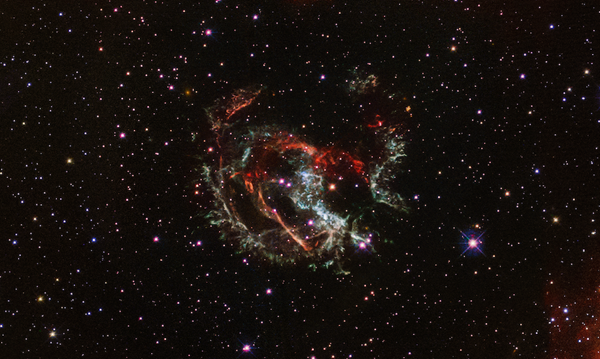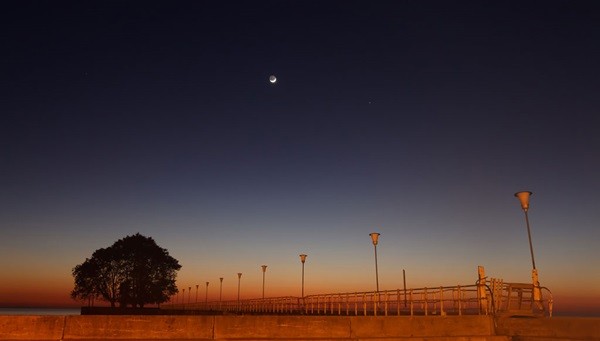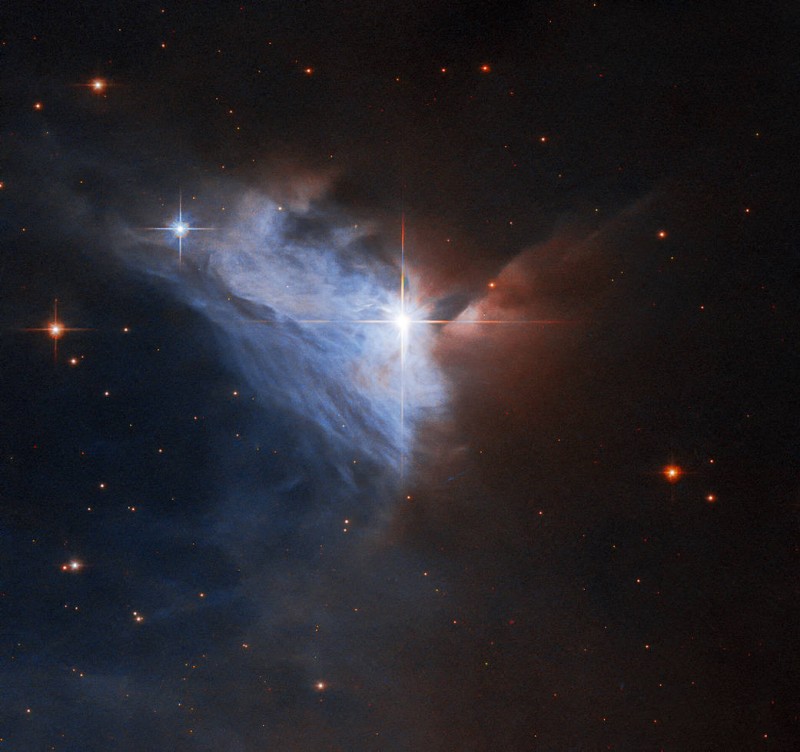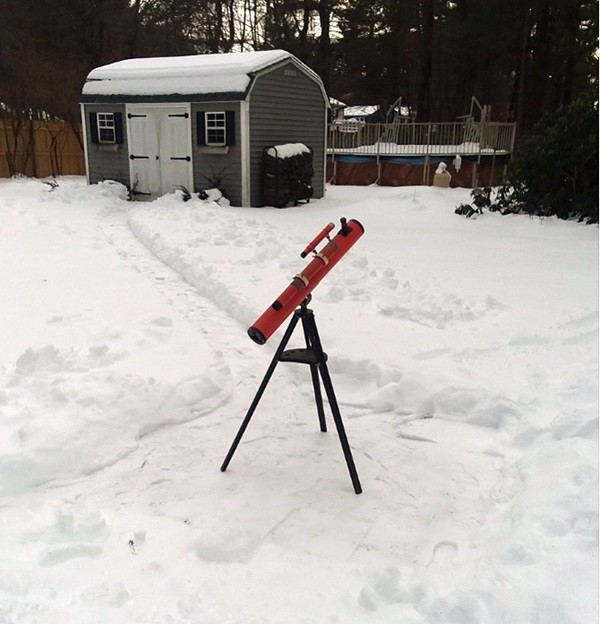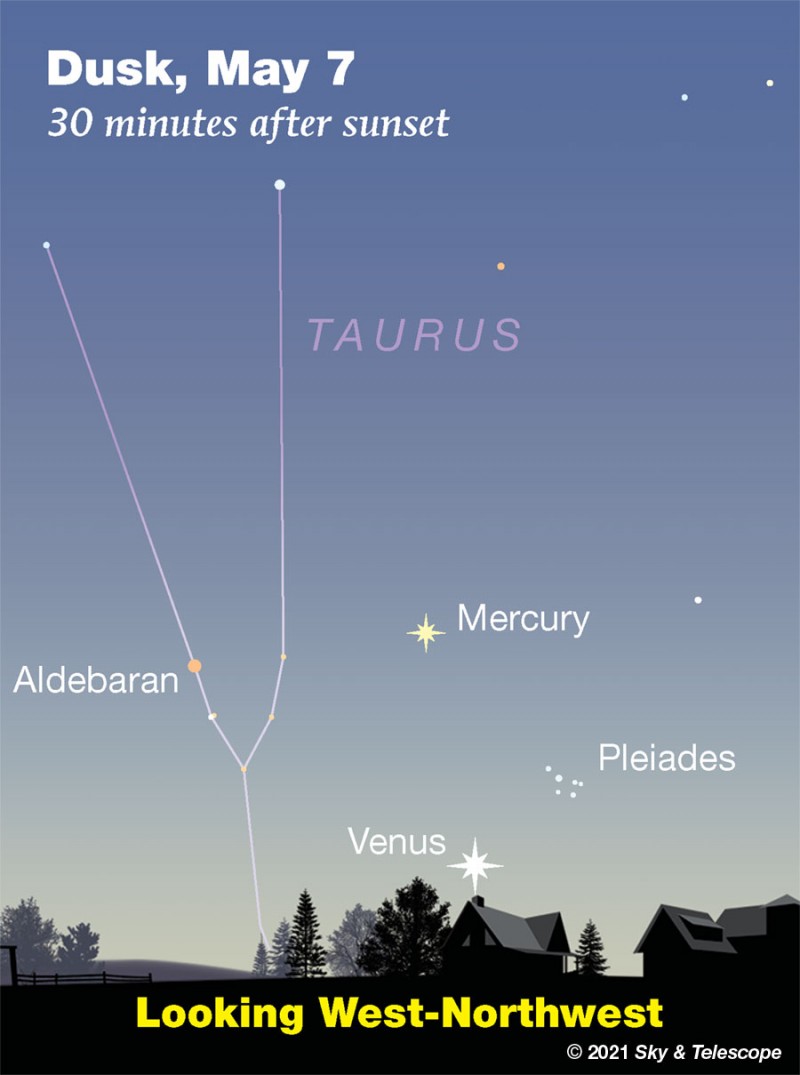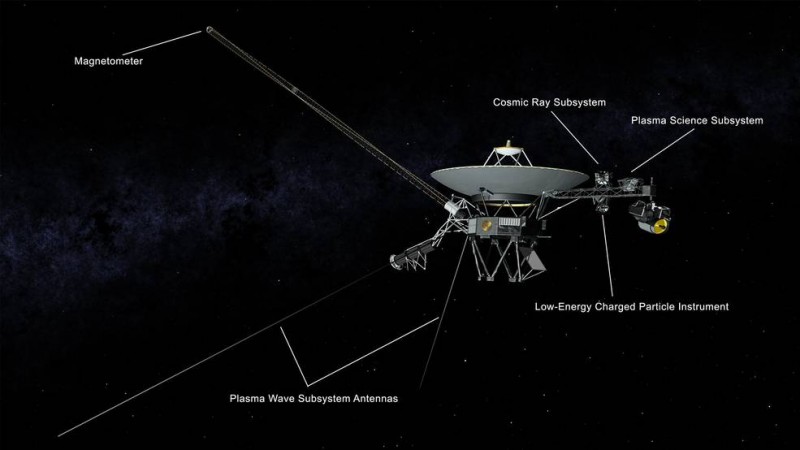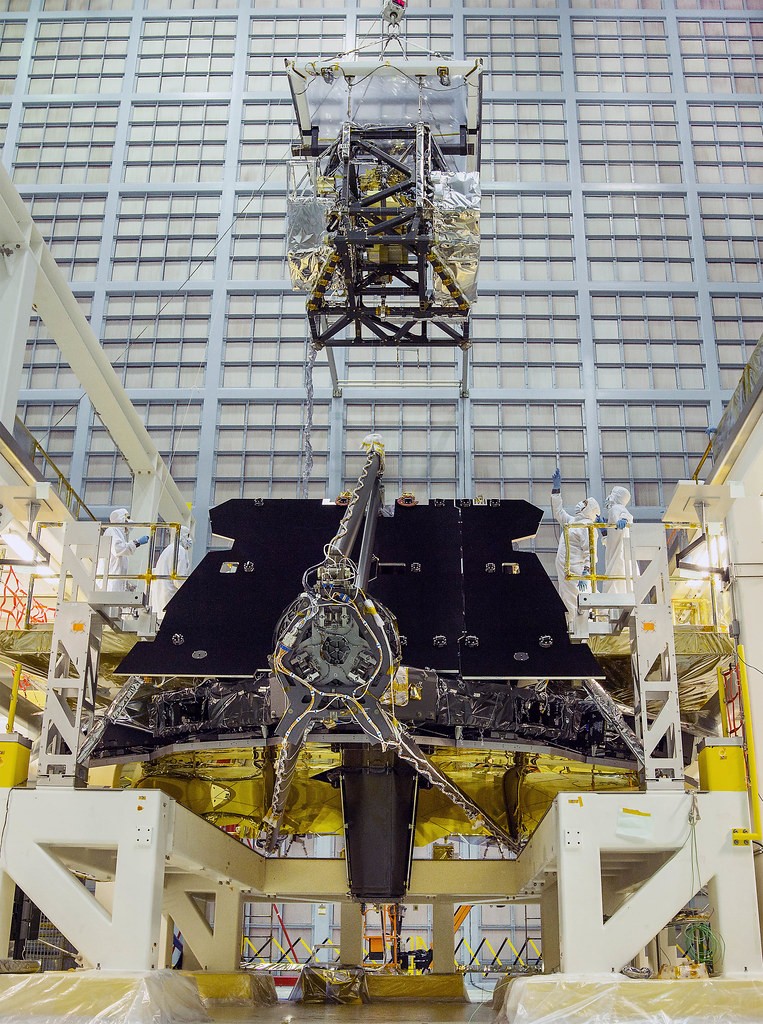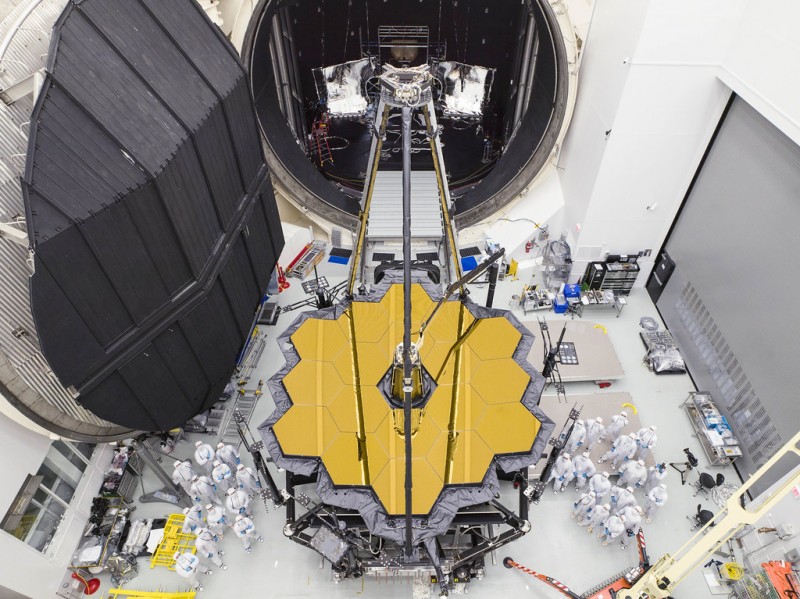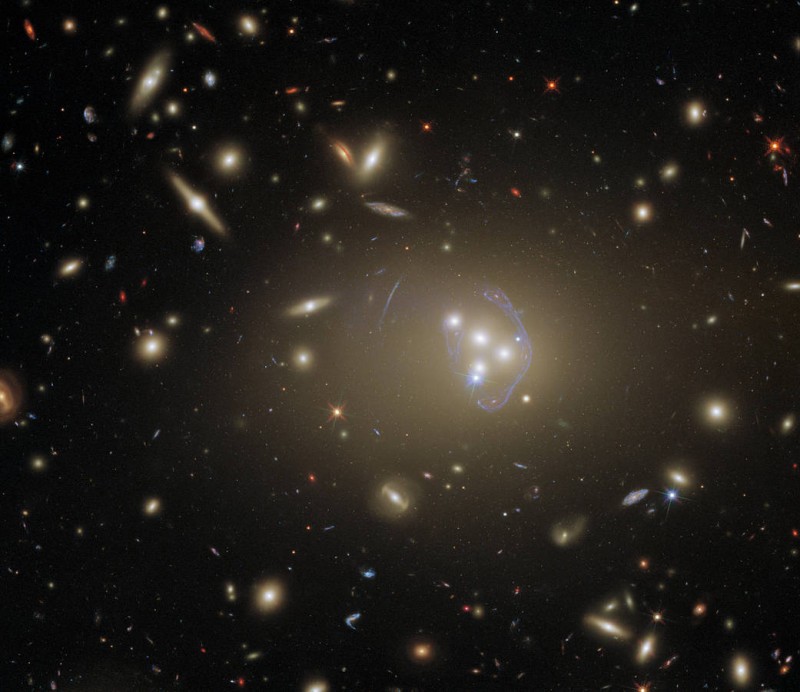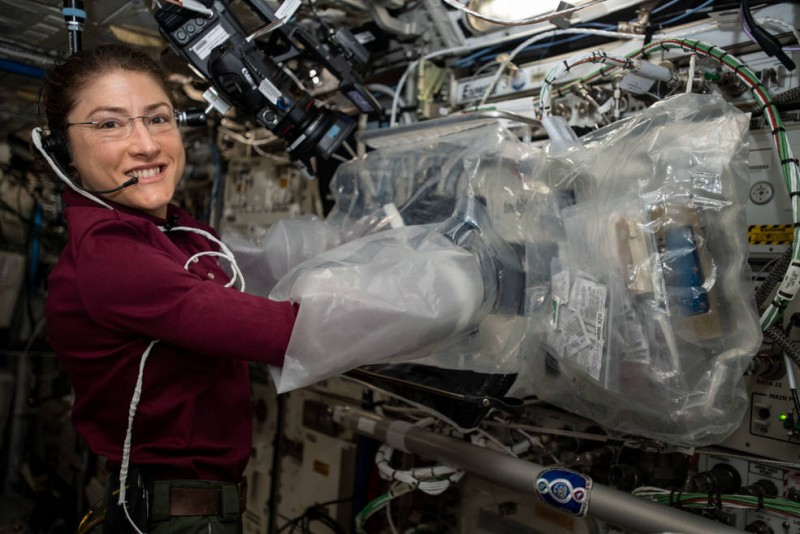Blog
Snapshot: Hubble reconstructs a supernova
Wednesday, May 19th 2021 04:45 PM
Snapshot: Hubble reconstructs a supernova
Astronomers recently used the Hubble Space Telescope to reconstruct this blast from the past.
Thousands of years ago, light from a dying star in the Small Magellanic Cloud reached Earth. No records of the event exist, but it left behind a tangle of expanding gas and dust still visible today. Astronomers recently used the Hubble Space Telescope to reconstruct the blast and accurately determine its age: 1,700 years. Researchers rewound the clock by tracking 22 knots of material inside the supernova remnant, watching these clumps spread outward by comparing two images taken with the same camera 10 years apart. Based on the knots’ motions, the team traced them to their point of origin — the site of the original supernova explosion — and determined how long the knots had been moving to reveal the age of the blast.
Source: Astronomy Magazine
Read More
Read More
The Sky This Week: See Mercury at its best
Tuesday, May 18th 2021 06:38 PM
The Sky This Week: See Mercury at its best
Mercury, Venus, and Mars rule the twilight, while the Moon makes its way across the sky from May 14 to 21.
The Moon and Mercury: This image shows Mercury to the right of the waning crescent Moon in the eastern morning sky over Buenos Aires, Argentina. This week, Mercury reaches its greatest eastern elongation, appearing in the western evening sky instead.
Friday, May 14
Start out the week with a two-for-one bonus in the hindquarters of Leo the Lion. Already high in the south at sunset, the Lion is perfectly poised for evening observing. Focus in on magnitude 2.6 Zosma, which forms the top of a right triangle with Denebola (the tip of Leo’s tail) and Chertan.
First up, Comet C/2020 R4 (ATLAS) is flying high about 10° northeast of Zosma. The comet, which was discovered Sept. 12, is fading and will require a larger scope (10 inches) to capture. But this is your last chance to see it — after the Moon begins to interfere, the...
Read More
Read More
Image Of The Day: Hubble Spots a Cosmic Cloud’s Silver Lining
Monday, May 17th 2021 04:46 PM
Image Of The Day: Hubble Spots a Cosmic Cloud’s Silver Lining
This image taken with the NASA/ESA Hubble Space Telescope showcases the emission nebula NGC 2313. Emission nebulae are bright, diffuse clouds of ionized gas that emit their own light.
The bright star V565 (center of the image) highlights a silvery, fan-shaped veil of gas and dust, while the right half of this image is obscured by a dense cloud of dust. Nebulae with similar shapes were once called “cometary nebulae” because the star with an accompanying bright fan looked like a comet with a bright tail.
The language that astronomers use changes as we become better acquainted with the universe, and astronomical history is littered with now-obsolete phrases to describe objects in the night sky, such as “spiral nebulae” for spiral galaxies.
Source: nasa.gov
Read More
Read More
Observing from your backyard
Friday, May 14th 2021 04:52 PM
Observing from your backyard
Equipment is important. Easy access is key.
Sometimes the best observing site is right in your backyard. Here, the author’s scope is set up in the center of a network of paths shoveled in the snow. This makes it exceptionally easy to both access stored equipment and take quick breaks to warm up in the house.
If you’re an avid backyard astronomer and own a scope, I have a question for you: What’s your home setup like?
Let’s say that you’re fortunate enough to live where 6th- or 7th-magnitude stars are visible on a clear, moonless night, and your horizon is wide open in all directions. You own a large, fancy, computer-controlled telescope, as well as all the necessary accessories to capture astroimages worthy of Astronomy’s Reader Gallery section. For you, having some kind of permanent structure is a necessity — unless you don’t mind wasting precious time lugging your telescope and equipment outsid...
Read More
Read More
THIS WEEK'S SKY AT A GLANCE, MAY 7 – 15
Thursday, May 13th 2021 05:46 PM
THIS WEEK'S SKY AT A GLANCE, MAY 7 – 15
Nova Cassiopeiae 2021 unexpectedly shot up to magnitude 5.4 around May 8th — faint naked-eye visibility in a dark sky — eight weeks after its initial outburst to 7th magnitude. It had remained at 7th or 8th during the interim. As of May 13th it had faded a little to magnitude 5.7. See Nova in Cassiopeia Brightens Suddenly, with finder charts and comparison stars.
The nova is low in the north in the evening but high in the northeast before the first beginnings of dawn. Set your alarm to look at least two hours before your local sunrise time.
Comet ATLAS (C/2020 R4) continued at 9th magnitude as of April 30th but should start fading rapidly. It's crossing Coma Berenices, conveniently high in the moonless evening sky. You may need at least a 6-inch scope. See Make the Most of Comet ATLAS.
FRIDAY, MAY 7
■ Greet Mercury and Venus low in the west-northwest in the fading afterglow of sunset. You may first spot Venus, brigh...
Read More
Read More
As NASA’s Voyager 1 Surveys Interstellar Space, Its Density Measurements Are Making Waves
Wednesday, May 12th 2021 07:50 PM
As NASA’s Voyager 1 Surveys Interstellar Space, Its Density Measurements Are Making Waves
Until recently, every spacecraft in history had made all of its measurements inside our heliosphere, the magnetic bubble inflated by our Sun. But on August 25, 2012, NASA’s Voyager 1 changed that. As it crossed the heliosphere’s boundary, it became the first human-made object to enter – and measure – interstellar space. Now eight years into its interstellar journey, Voyager 1’s data is yielding new insights into what that frontier is like.
If our heliosphere is a ship sailing interstellar waters, Voyager 1 is a life raft just dropped from the deck, determined to survey the currents. For now, any rough waters it feels are mostly from our heliosphere’s wake. But farther out, it will sense the stirrings from sources deeper in the cosmos. Eventually, our heliosphere’s presence will fade from its measurements completely.
“We have some ideas...
Read More
Read More
THE ISIM & INSTRUMENTS
Tuesday, May 11th 2021 04:31 PM
THE ISIM & INSTRUMENTS
A rare view of the instruments being lowered into the Webb telescope at NASA/Goddard. Webb's science instruments were installed in a surgically precise operation. Read more about the ISIM installation on NASA.gov Credit: NASA/Chris Gunn
Webb's instruments are contained within the Integrated Science Instrument Module (ISIM) which is one of three major elements that comprise the James Webb Space Telescope Observatory flight system. The others are the Optical Telescope Element (OTE) and the Spacecraft Element (Spacecraft Bus and Sunshield).
The ISIM is the heart of the James Webb Space Telescope, what engineers call the main payload. It houses the four main instruments that will detect light from distant stars and galaxies, and planets orbiting other stars.
The ISIM Includes The Following Instruments:
Near-Infrared Camera, or NIRCam - provided by the University of Arizona
Near-Infrared Spectrograph...
Read More
Read More
Optical Telescope Element (OTE)
Monday, May 10th 2021 09:01 PM
Optical Telescope Element (OTE)
The OTIS (OTE+ISIM) out of cryovac chamber at NASA Johnson. The OTIS is an acronym that includes the OTE plus the Integrated Science Instrument (ISIM) package - essentially the optics and science instruments. Credit: NASA/Chris Gunn
The Optical Telescope Element (OTE) is the eye of the James Webb Space Telescope Observatory. The OTE gathers the light coming from space and provides it to the science instruments. The OTE consists of the mirrors as well as structures and subsystems that support the optics.
The OTE Consists Of :
6.5 meter diameter primary mirror made of 18 hexagonal segments
Round 0.74 meter Secondary mirror (image gallery)
Tertiary mirror (image gallery) and Fine Steering Mirror, both of which are contained in the Aft Optics Subsystem (image gallery).
Telescope structure (image gallery) (which includes the primary mirror backplane assembly, the main backplane support fixture (BSF),...
Read More
Read More
Hubble Gazes at a Cluster Full of Cosmic Clues
Friday, May 7th 2021 09:41 PM
Hubble Gazes at a Cluster Full of Cosmic Clues
Image credit: ESA/Hubble & NASA, R. Massey
This detailed image features Abell 3827, a galaxy cluster that offers a wealth of exciting possibilities for study. Hubble observed it in order to study dark matter, which is one of the greatest puzzles cosmologists face today. The science team used Hubble’s Advanced Camera for Surveys and Wide Field Camera 3 to complete their observations. The two cameras have different specifications and can observe different parts of the electromagnetic spectrum, so using them both allowed the astronomers to collect more complete information. Hubble also observed Abell 3827 previously because of the interesting gravitational lens at its core.
Looking at this cluster of hundreds of galaxies, it is amazing to recall that less than 100 years ago, many astronomers thought the Milky Way was the only galaxy in the universe. Although astronomers debated the existence...
Read More
Read More
What Working With NASA Means to US Small Businesses
Thursday, May 6th 2021 10:08 PM
What Working with NASA means to US Small Businesses
Small businesses have worked with NASA to 3D print tissue with living cells in space, research how to grow plants on Mars, improve air traffic management, and more. As their ideas help propel the space and aeronautics technologies of the future, these small businesses accelerate economic benefits closer to home.
Each year NASA contributes hundreds of millions of dollars to the U.S. economy via contracts to small businesses. In turn, hundreds of companies across rural and urban areas, including many minority- and women-owned businesses, research and develop innovations to empower the agency’s work in human exploration, space technology, science, and aeronautics.
NASA asked five companies how working with NASA’s Small Business Innovation Research/Small Business Technology Transfer (SBIR/STTR) program has impacted them. Here’s what they said.
NASA Astronaut Christina Koch...
Read More
Read More
